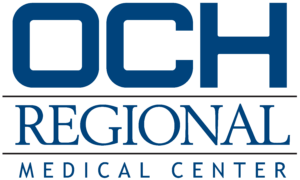
On the day before Thanksgiving, Charles Waggoner completed his fifteenth visit in the hyperbaric oxygen (HBO) chamber at the OCH Wound Healing Center and walked out with a jar of honey given to him by the HBO tech Blake Jernigan.
“You can’t help but become friends with them [wound center staff]. They’re very personable and both Blake and Carmen have been exceptionally compassionate and professional,” said Waggoner.
For Waggoner, HBO therapy is another modality to help heal his body after complications from open heart surgery earlier this year.
Now this same treatment that has brought healing to thousands of patients in the Golden Triangle area has been made available as another avenue to treat student athletes at Mississippi State University.
“The Mississippi State University Sports Medicine department is excited about the opportunity to work with OCH on delivering hyperbaric oxygen therapy for sports related injuries,” said Thomas Callans, Mississippi State Head Athletic Trainer.

While this type of therapy is new to student athletes, it’s been used by professional athletes for years. NFL Hall-of-Fame quarterback Joe Namath is one of the biggest proponents of this therapy, crediting it for reversing brain damage from years on the football field.
“There have been studies that support consistent treatment in the hyperbaric oxygen chambers can help heal the brain after concussions, but it takes several visits to be effective,” said Dr. Josh Black who oversees the wound center. “Even after the therapy is completed, the temporary extra high oxygen levels encourage normal tissue oxygen levels to accelerate the healing process.”
The benefits of HBO therapy extend far beyond wound healing and concussion management. The specialized therapy has been proven beneficial for patients with carbon monoxide poisoning, burns, radiation injuries, severe anemia, gangrene, osteomyelitis and much more.
“Radiation injuries and osteomyelitis require around 40 treatments to see complete healing. Patients with a failed flap or graph reconstruction on a crushed hand can see results in as little as 10 treatments,” explained Jernigan who has undergone extensive training to operate the hyperbaric oxygen chambers.

Each visit in the chamber takes approximately one hour, and patients are even able to watch a movie during the treatment. Before and after each treatment in the chamber, Jernigan examines the patients’ ears and checks their blood pressure. During treatments, Jernigan stays close by to monitor patients and talks to them through a phone attached to the chamber. On the sides of the HBO chambers, are pictures of animated fish like Nemo and Dory added for decoration. That’s because going in the chamber is often referred to as “diving.” The pressure, which is two to three times higher than normal air pressure, can make a patient’s ears “pop.”
“Your body's tissues need an adequate supply of oxygen to survive and heal properly. When tissue is injured, it requires even more oxygen to survive. Hyperbaric oxygen therapy allows the body to absorb more oxygen than would be possible breathing pure oxygen at normal air pressure,” explained Jernigan.
Waggoner still has several treatments remaining, and because of that, he’s thankful for the convenience of specialized treatment so close to home.
“For the past six years, we’ve offered this advanced treatment to the Golden Triangle area,” said OCH Wound Healing and Hyperbaric Program Director Brandi Krajewski. “We look forward to continuing to work with the MSU Athletic Department to provide another ancillary service to accelerate the healing process for athletes.”
Patients do not need a referral to make an appointment at the center. Click here to learn more about the OCH Center for Wound Healing & Hyperbarics.
